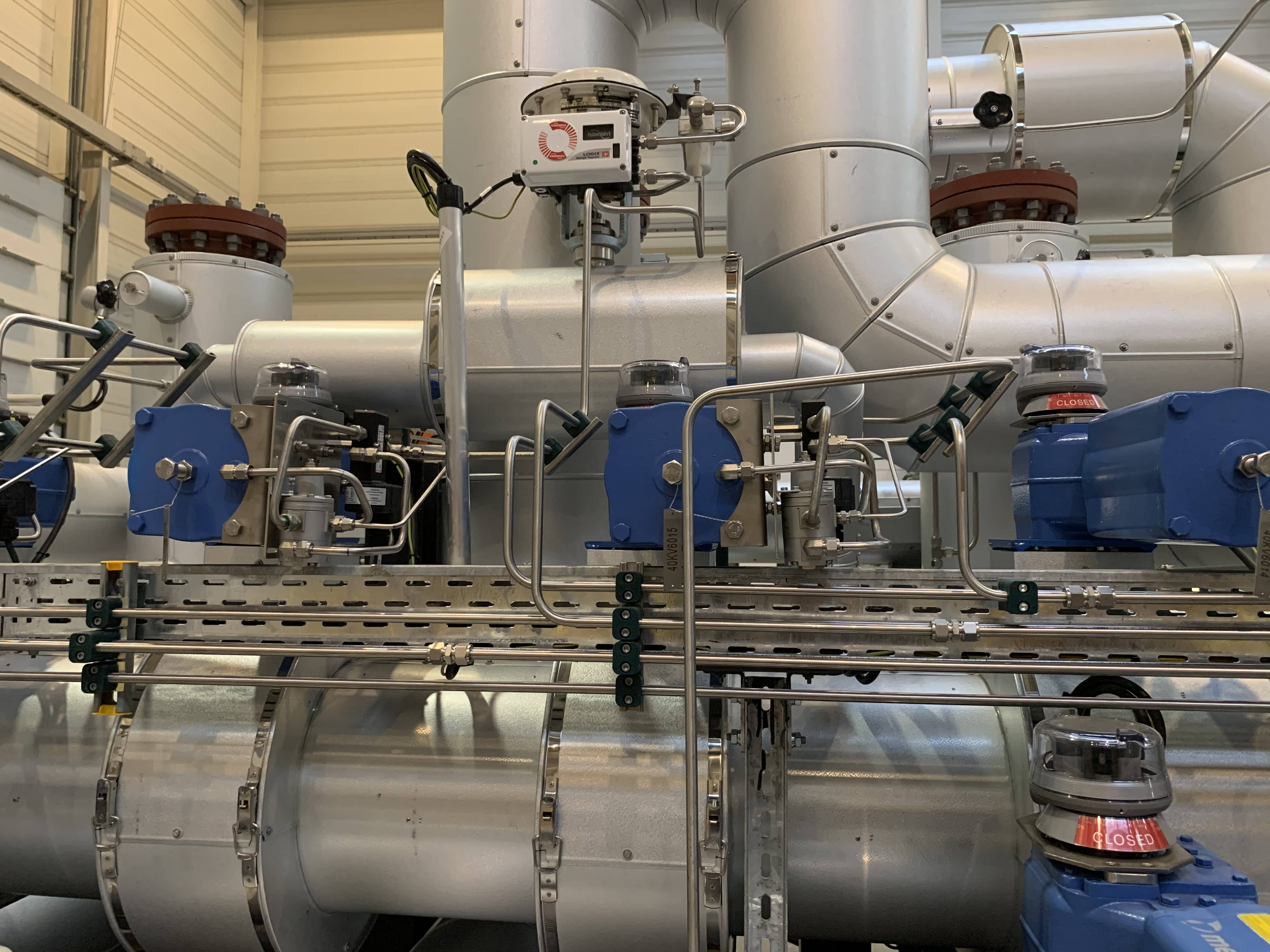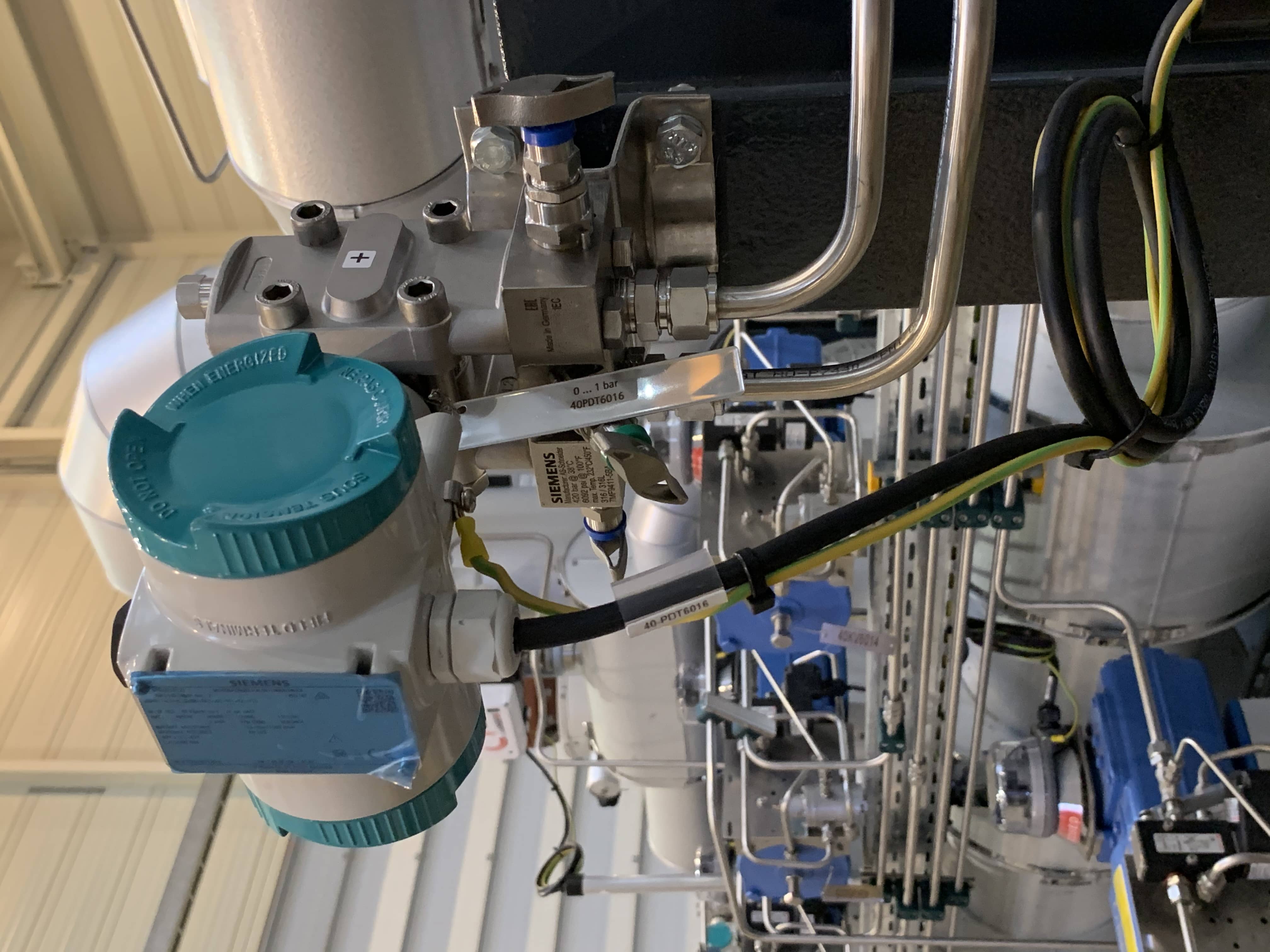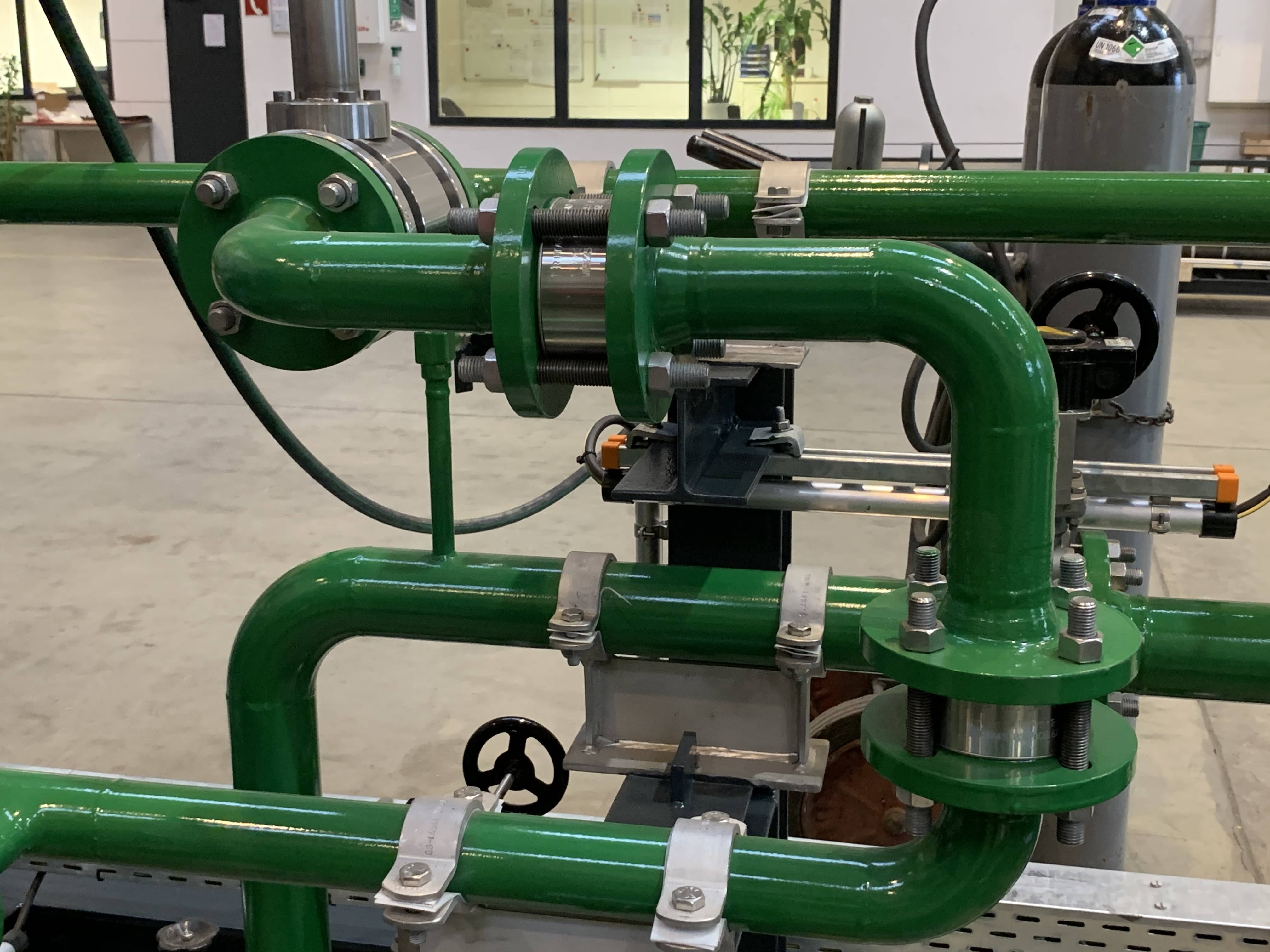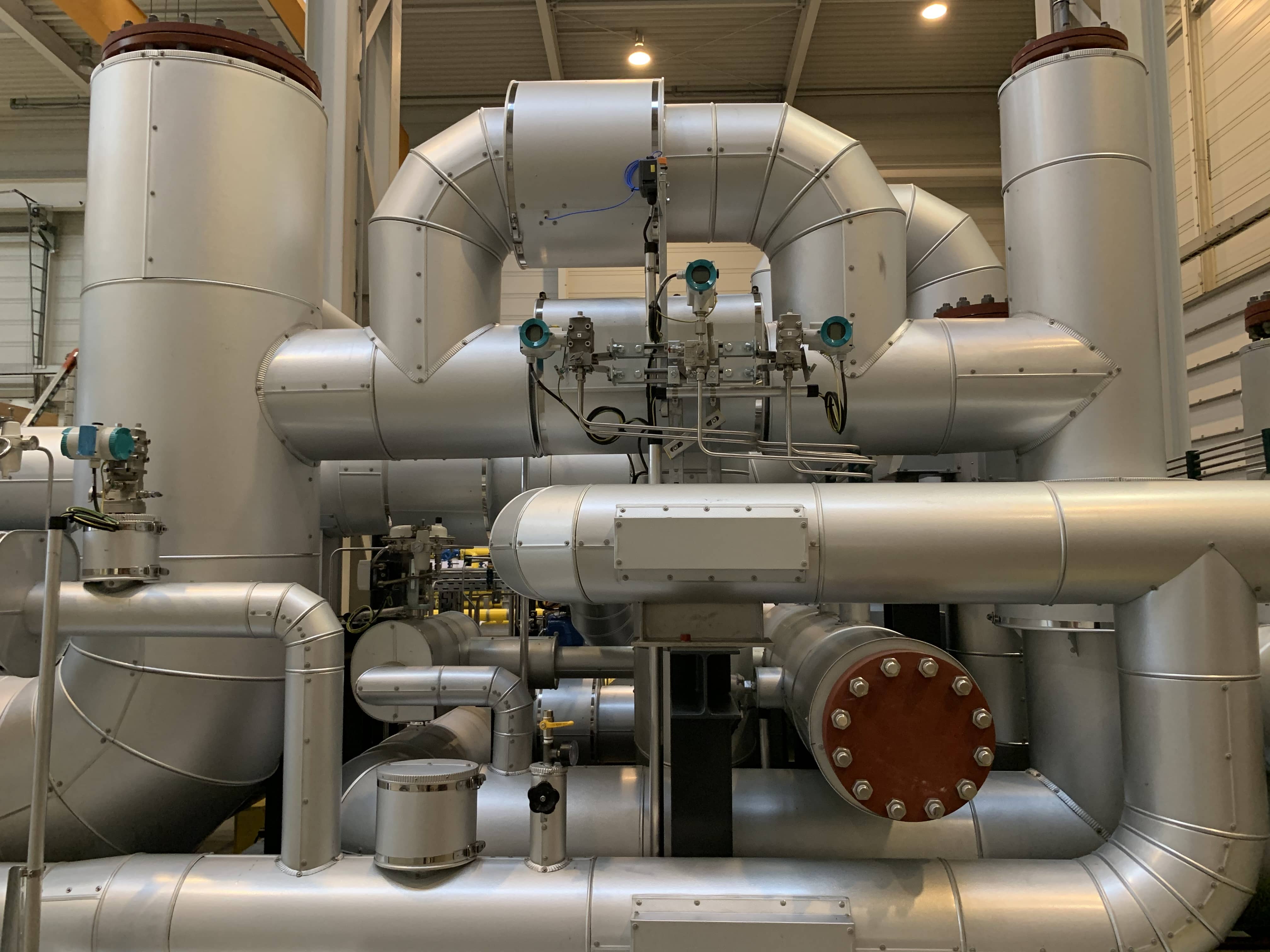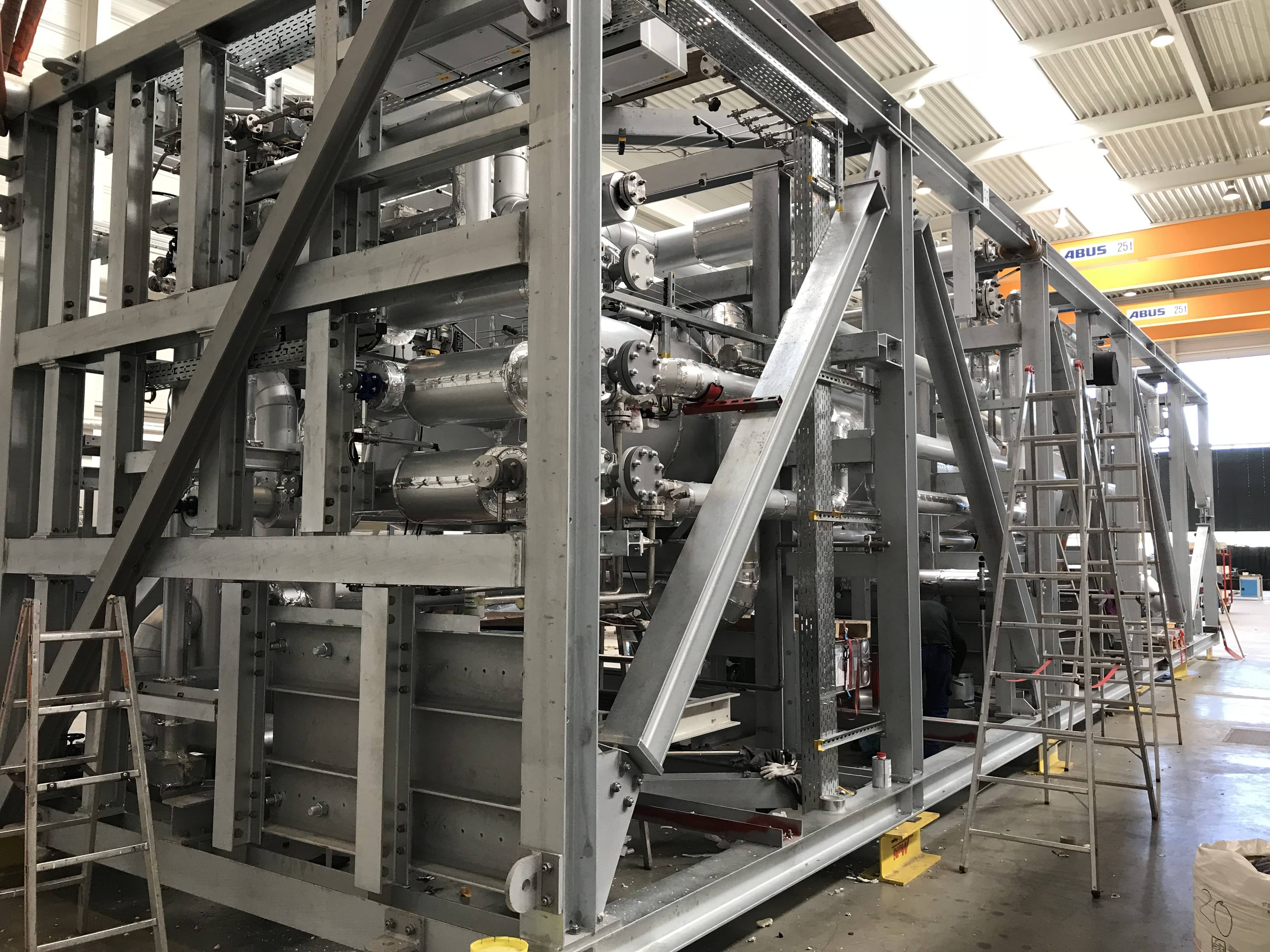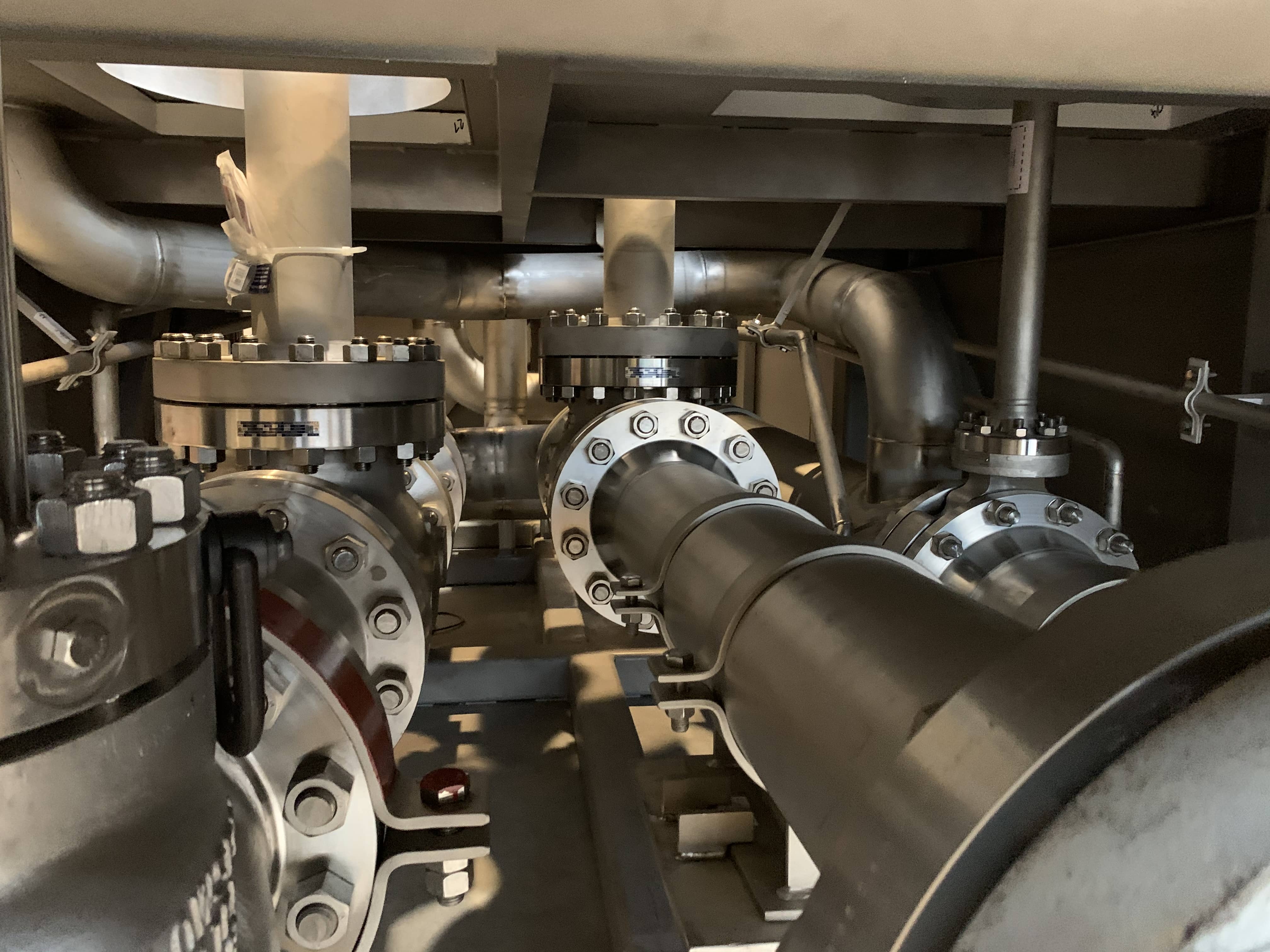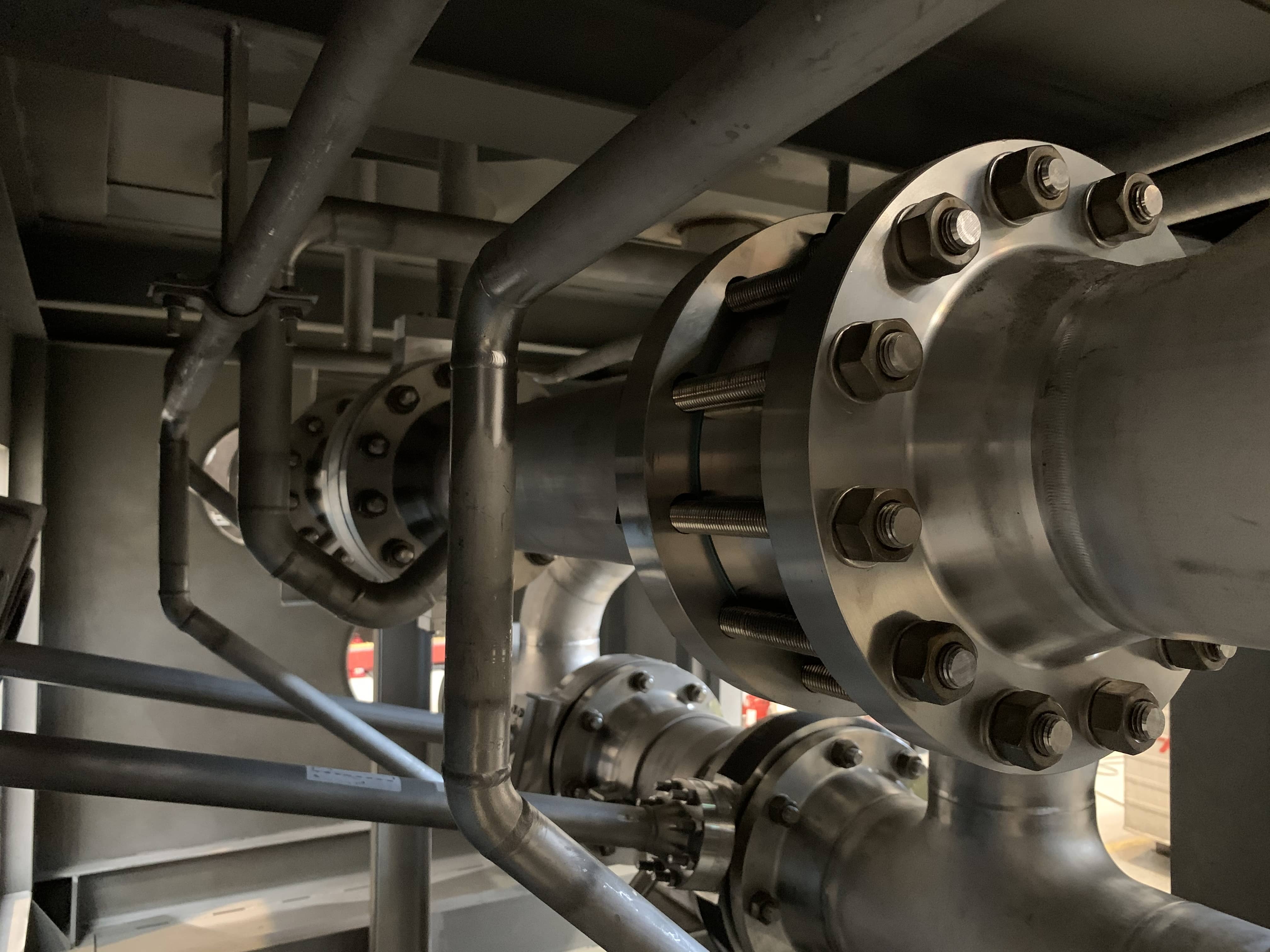Our technology portfolio of small-scale plants
CLEAN GAS TECHNOLOGY
CRYOGENIC GAS TECHNOLOGY
ICEBERG. SMR
Steam-Methane-Reforming
Generation of hydrogen from natural gas, biomethane and biogas
Grey, blue and green hydrogen
ICEBERG. CCR
Carbon Capture and Recovery
CO2 recovery and
CO2 liquefaction from raw gases / residual gases
CO2 liquid and solid (dry ice)
ICEBERG.LNG
Liquified Natural Gas
Cryogenic liquefaction of natural gas, biomethane and biogas
LNG
Bio LNG
ICEBERG.SMR
Steam Methane Reforming (SMR)
Hydrogen is the most common element in the universe. Hydrogen has a high energy value and is the only fuel that produces only water vapor when burned. Therefore, many people see it as the solution for the energy supply of the future, if it can be produced CO2-neutral or CO2-free.
Steam reforming has been the common process for the large-scale production of hydrogen from natural gas and steam for many years. However, the natural gas used for this is a fossil fuel and CO2 is released during production. For this purpose ICEBERG.ENGINEERING offers a small-scale plant with this technology with a capacity of currently 100 m³(N)/h for the production directly on site at the customer. This eliminates the need for transportation and reduces CO2 emissions and costs. Higher capacities up to 300 m³(N)/h are planned. Through combination with the CCR technology of ICEBERG.ENGINEERING the CO2 emissions can be further reduced and the resulting CO2 can be used as raw material.
The future, however, will belong to green hydrogen, i.e. hydrogen produced CO2-neutral or CO2-free, which is currently produced almost exclusively by electrolysis using electricity from renewable energies. ICEBERG.ENGINEERING uses SMR technology for green hydrogen using bio-methane or biogas. These solutions have significant cost advantages compared to electrolysis. In combination with CCR technology CO2 emissions can be further reduced.
Applications
Hydrogen as a fuel:
- Combustion processes
- Fuel cells
Hydrogen for H2 filling stations:
- For vehicles
- For cargo centres
Hydrogen as a raw material for industry (synthetic fuels, fertilizers, etc.)
![[Translate to Englisch:] Steam Methane Reforming (SMR) [Translate to Englisch:] Steam Methane Reforming (SMR)](/fileadmin/_processed_/9/e/csm_iceberg_smr_anlage_7cb6a473cc.png)
![[Translate to Englisch:] Carbon Dioxide Capture and Recovery [Translate to Englisch:] Carbon Dioxide Capture and Recovery](/fileadmin/_processed_/d/1/csm_iceberg_ccr_51699e605d.jpg)
ICEBERG.CCR
Carbon Dioxide Capture and Recovery
The countdown to save the planet is unstoppable. Every year, 53.4 gigatons of greenhouse gases are released worldwide, of which carbon dioxide (CO2) accounts for the largest share (78%).
CO2 is not only a climate-damaging gas, but also a valuable raw material after appropriate processing, drying and liquefaction. Its importance will increase even further, for example, in the production of synthetic fuels using hydrogen.
Iceberg.Engineering realizes CO2 recovery and liquefaction plants with raw/residual gases from:
- biological processes
- Fermentation plants (breweries, distilleries)
- Anaerobic digestion (biogas)
- the chemical industry or combustion processes
- CO2 waste gas from dry ice poduction
The odourless, non-flammable gas, 1.5 times heavier than air, is used in many different markets:
- Beverage industry (carbonation, breweries, drinking water treatment, decaffeination of tea and coffee, defatting of cocoa)
- Industrial plants (laser cutting, inert gas for welding, desalination plants)
- As refrigerant (transport refrigeration, airline catering, refrigeration plants)
- Packaging of foodstuffs in a protective gas atmosphere
- Greenhouses (as fertiliser to increase production)
- Dry ice production for cleaning applications
- Cement factory
ICEBERG.LNG
Liquified Natural Gas (LNG)
Natural gas is the cleanest fossil fuel, reducing the emission of harmful air pollutants such as NOx and SOx to almost zero. It is used in engines that generate up to 50% less noise and vibration than diesel vehicles, reducing noise pollution in cities.
We offer small-scale plants for the cryogenic liquefaction of natural gas. The capacities of our plants currently range from 12-36 t/d.
Biomethane or biogas (after internal preparation) can also be liquefied to Bio-LNG. Here, too, plants with capacities of 12-36t/d are currently feasible.
The use of LNG significantly reduces CO2 emissions by 20-30% compared to conventional fuels. LNG is increasingly used as an alternative in the field of marine propulsion and commercial vehicles.
With Bio-LNG and the use of CCR technology for liquefaction, CO2 emissions are further reduced.
(Bio)-LNG plants applications:
- Remote gas fields
- Small gas fields
- Virtual pipelines (Natural Gas-Bio Methane) for decentralized supply
- LNG as fuel for transport vehicles (ships)
- Larger biogas plants
(Bio)-LNG sources:
- Natural gas pipelines
- Biomethane
- Biogas

